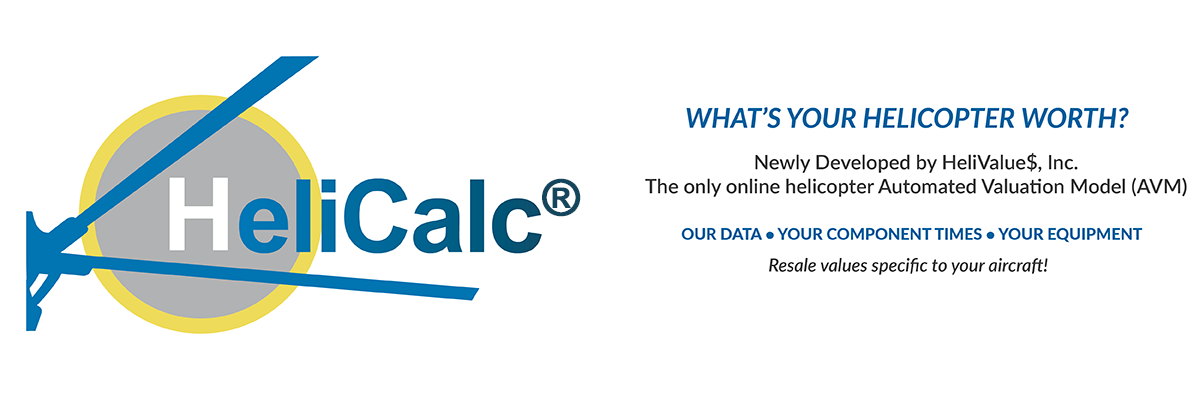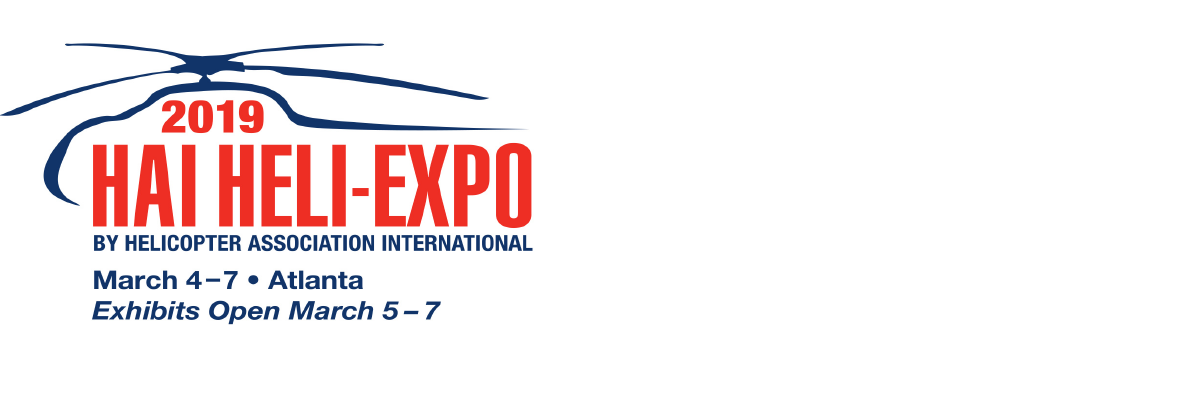HeliValue$, Inc. held its review of The Official Helicopter Blue Book® on October 22, 2019. Resale pricing adjustments were made for the following helicopter models:
| Mfg Model |
|
Resale Value |
|
Comments |
| |
|
|
|
|
| Airbus EC155B1 |
|
− |
|
configuration pricing change |
| |
|
|
|
|
| Boeing CH-47D |
|
↑ |
|
resale price increase |
| |
|
|
|
|
| Leonardo AW119 Koala |
|
− |
|
configuration pricing change |
| |
|
|
|
|
| Leonardo AW119Ke |
|
↓ |
|
configuration pricing change and resale pricing reduced |
| |
|
|
|
|
| Leonardo AW119Kx |
|
↓ |
|
2018 and 2019 resale pricing added, configuration pricing change and resales pricing reduced |
| |
|
|
|
|
| Leonardo AW109SP |
|
↓ |
|
configuration pricing change and resale pricing reduced |
| |
|
|
|
|
| Leonardo AW139 Short Nose |
↓ |
|
configuration pricing change and resale pricing reduced |
| |
|
|
|
|
| Leonardo AW139 Long Nose |
|
↓ |
|
configuration pricing change and resale pricing reduced |
| |
|
|
|
|
| MD MD500D |
|
↓ |
|
configuration pricing change and resale pricing reduced |
| |
|
|
|
|
| Sikorsky S76C+ |
|
↓ |
|
configuration pricing change and resale pricing reduced |
| |
|
|
|
|
| Sikorsky S76C++ |
|
↓ |
|
configuration pricing change and resale pricing reduced |
| |
|
|
|
|
| Sikorsky S76D |
|
− |
|
configuration pricing change |
| |
|
|
|
|
Resale pricing adjustments are based on actual sales transactions and current market conditions such as overall trends in asking prices, increase or decrease in supply, demand, and sales volume. We obtain sales pricing data from owners and operators, lenders and lessors, brokers and equipment manufacturers worldwide.
While we do review all models each quarter, frequently traded models are updated as soon as they begin to show variation from the previously published values. Stay up to date on resale pricing changes by purchasing an annual subscription.
3Q Market Overview

Piston helicopter sales remain stable from last quarter, but inventory levels continue to fall. If demand remains stable over the next six months, this decrease in inventory could have a positive impact on resale prices in 2020.
Light single turbine sales seem to have slowed this quarter. The few sales that have taken place have started to indicate signs of possible weakening in the Bell 407 and Airbus AS350 markets. Continue to monitor this newsletter and website for any changes in the near future.
Light twin turbine sales also seem to have slowed down this quarter. VIP configured helicopters, however, have shown to be the larger number of sales in comparison to other configurations.
And, the only good news this quarter, medium twin sales are on the rise. Bell 212 and 412, Leonardo AW109SP and AW139, Sikorsky S76C+ and S76C++ are seeing more sales activity than in the first half of this year. Back to the bad news – all of these models are seeing declining values. Possibly these falling values are the driving factor in the transactions. As in the light twin market, there is an increase in VIP helicopter transactions, predominantly in Leonardo and Sikorsky helicopters.
Heavy twin activity continued to increase this quarter, but no new sales have been recorded. On October 31st there was an Airbus H225 crash off the South Korean coast claiming the lives of all seven occupants aboard. The cause of the accident is not yet determined. As with previous major helicopter accidents that could affect the desirability of particular models, we are monitoring both news and attitudes closely to detect the eventual market impact. Please do not rush to impair this model on your balance sheets, especially if you report under US GAAP and cannot reverse the impairment.
By: Jason Kmiecik, President
Subscribe NOW
Detailed Value Report - Any Time, Anywhere

The cost to you is $495/each.
Use coupon HC100 and receive $100 off your first HeliCalc® order.
This offer expires December 31, 2019.
HeliCalc® is the newest addition to the tools and resources offered by HeliValue$. We developed it specifically for our customers with a strong background in helicopter operations, to give you 24/7 access to the value of your specific helicopter in its exact current configuration and component status. HeliCalc® provides a comprehensive report based on your helicopter’s actual component times, maintenance programs, and mission equipment.
HeliCalc® is not an appraisal and does not meet USPAP standards. It is an Automated Valuation Model (AVM) and should not be used in place of a formal appraisal performed by a Qualified Appraiser as defined in the U.S. Code of Federal Regulations, or its equivalent in your country.
If you are a Qualified Appraiser yourself, with the appropriate level of experience to establish competence as required by the professional appraisal standards of your country, HeliCalc® is a superb tool to aid you in performing helicopter appraisals. Let HeliValue$ do the research work of maintaining overhaul and replacement costs, maintenance intervals, and marketplace trends. All you have to do is enter the data and output the report. You can incorporate our HeliCalc® directly into your own appraisal report to your client.
To complete a HeliCalc® report you will need:
· Current component status report
· Detailed installed equipment list
· The knowledge and experience to accurately read the reports and identify the components’ nomenclature, time remaining (TR) or time since overhaul (TSO).
Start HeliCalc®

 Login
Login











